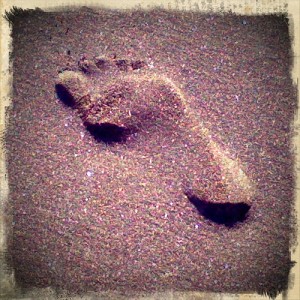Ecological Footprint of Kiwi Lifestyles Under the Microscope
 An in-depth research project is set to consider how kiwis live in terms of the consumption of the world’s key resources and how communities can become more resilient by reducing their dependence on these resources as costs rise over the next 20 – 30 years.
An in-depth research project is set to consider how kiwis live in terms of the consumption of the world’s key resources and how communities can become more resilient by reducing their dependence on these resources as costs rise over the next 20 – 30 years.
The New Zealand Footprint Project is taking place in two South Island and three North Island communities and is led by the Victoria University of Wellington in partnership with the Auckland Council and the Otago Polytechnic Centre for Sustainable Practice.
Differing urban forms and socio-economic and cultural behaviours in New Zealand result in a range of ecological footprints. The project studies these differences in resource use based on socio-economic ‘tribes’ as identified in the ‘8 Tribes – The Hidden Classes of New Zealand’ research (Caldwell & Brown 2007).
The project has been designed to investigate how New Zealand and its 8 defined ‘tribes’ can best adapt their lifestyle choices to meet the challenge of global demand resulting in increasingly expensive resources. Researchers will first establish the resource use of community member volunteers, and then look at what might be done to reduce that use as resources become more costly. The project will ultimately provide the communities involved with tools that will be increasingly useful for measuring and reducing resource use.
In Auckland, the research is being carried out by Dr Maggie Lawton, working with communities in Waitakere and on Waiheke Island. In the south, Ella Lawton will conduct the research on behalf of the Otago Polytechnic Centre for Sustainable Practice.
Thanks to the following environmentally responsible business for supporting Happyzine:
- Eco-friendly – Reusable for years upon years
- Safe & non-leaching – BPA free (bisphenol-A)
- Solid food-grade stainless steel – Super hygienic & clean
www.ecotanka.com
Dr Maggie Lawton said that over the period of the research a picture will be developed of the collective community footprints of each of the communities involved.
“1.4 million people live in the Auckland Region and lifestyles vary from rural to urban, coastal to bush to island. We are working work with some of those communities to try to understand whether the different lifestyles contribute significantly to ecological footprints, if so why, and how people wanting to reduce their footprints can do so,”
Initially, community volunteers are asked to grant time for a confidential, anonymous interview about their lifestyles. The researchers expect that most of the volunteers will then want to learn more about their resource use and will have additional involvement with the project.
“Some people will be motivated by environmental concern, others by the rising costs we are facing, either way understanding our resource use and how to better manage it, will be beneficial.
“We hope to also survey people in Mangere, building on community workshops held there last year, and if time permits, other parts of Auckland.”
Dr Lawton said ecological footprinting will be considered as a tool for policy makers for planning and monitoring progress with sustainable development.
“This will align strongly with the Auckland Mayor’s vision for both a livable and Eco-City.”
In the South Island, Ella Lawton of the Otago Polytechnic Centre for Sustainable Practice is working with the farming community of Tarras and the service town of Cromwell.
Over the period of the research a picture will be developed of the collective community footprints of each of the communities involved. Workshops will then be offered for those who wish to participate with others in the community to find ways to reduce the collective footprint of each community. Local councils will assess how they can use ecological footprint data from the study to support those communities.
The researchers say New Zealand has plenty of work to do in this field.
“A ‘fair earth share’ footprint has been calculated at 1.7 global hectares per person based on a world population of 7 billion by the end of 2011. New Zealanders ecological footprint was calculated in 2010 at 4.89 global hectares per person. There’s also a hefty local disparity with people on higher incomes consuming far more in terms of global hectares than those at the lower end of the scale. We are yet to see how urban and rural populations differ. These local disparities are why the ‘8 Tribes’ research is to be used as a source of insight into the differing patterns of consumption and behaviour,” said Ms Lawton.
The overarching intent of the New Zealand Footprint Project is to further understand the ecological impacts of New Zealand’s differing communities. Once data is collated and analyzed, the project will move into a ‘backcasting’ process where communities create a future vision and then plan for it.
loading...
loading...




Voices of our community